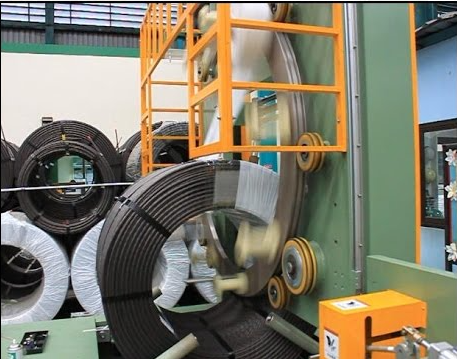
In the demanding world of industrial manufacturing and logistics, coil wrapping machines are essential equipment. These machines do more than just wrap products; they are crucial for protecting, securing, and maintaining the integrity of coiled materials like steel, aluminum, copper wire, and cables during storage and transit. Ensuring these valuable materials reach their destination undamaged is paramount. With a wide variety of coil wrapping solutions available, selecting the right machine requires understanding the different types, their specific functions, features, and advantages relative to your operational needs.
Choosing the appropriate type of coil wrapping machine is a strategic investment impacting operational efficiency, product protection levels, material usage, and even workplace safety. This guide delves into the primary types of coil wrapping machines available, helping you identify a solution that aligns with both current requirements and potential future expansion, striking an optimal balance between cost-effectiveness and performance.
As industry demands for faster, safer, and more efficient packaging solutions continue to grow, a clear understanding of the available options and their benefits is vital. The selection of a coil wrapping machine is not merely a logistical choice—it's a strategic decision that influences downstream processes and overall business productivity.
[claim] Understanding the different types of coil wrapping machines helps in selecting the best fit, ensuring that packaging processes are efficient, cost-effective, and tailored to specific industry needs for optimal product protection and operational flow.
1. Horizontal Coil Wrapping Machines: Operation and Applications
1.1 Understanding Horizontal Coil Wrappers
Horizontal coil wrapping machines are engineered specifically for wrapping coils positioned with their axis horizontal ("eye-to-the-sky" or "eye-to-the-wall" depending on loading). These machines typically feature a wrapping ring or shuttle that travels through the eye of the coil, applying stretch film, VCI paper, or other wrapping materials around the circumference and often across the faces. This method ensures full, uniform coverage, effectively sealing the coil against environmental factors like moisture, dust, and corrosion.
The horizontal orientation facilitates the wrapping of large-diameter, heavy, or unstable coils, such as slit steel coils or large wire bundles. The machine provides consistent application of wrapping material across the entire surface, ensuring reliable protection critical for industries like metal processing and distribution.
1.2 Key Advantages of Horizontal Wrapping
- Comprehensive Protection: Offers complete surface coverage, ideal for materials sensitive to environmental damage or requiring long-term storage.
- Handling Heavy/Large Coils: Well-suited for managing large, heavy, or awkwardly shaped coils common in the metals industry.
- Versatility in Wrapping Materials: Can typically handle various wrapping materials, including stretch film, VCI paper, and woven fabrics.
- Customizable Wrap Patterns: Allows for different wrap patterns (e.g., full wrap, circumferential wrap) and adjustable overlap to meet specific protection requirements.
These features provide a level of customization that enhances both packaging efficiency and product integrity, significantly reducing the risk of damage during handling and shipping.
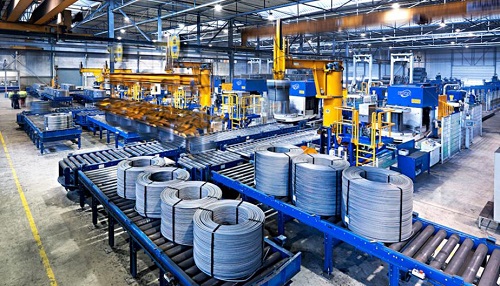
1.3 Common Industrial Applications
Horizontal coil wrapping machines are indispensable in industries requiring robust protection for high-value or sensitive coiled products:
- Steel and Aluminum Processing: Protecting master coils, slit coils, and sheets from corrosion and physical damage during transport and storage.
- Wire and Cable Manufacturing: Securing large reels or spools of wire and cable, preventing unwinding and protecting against moisture or abrasion.
- Tube and Pipe Industry: Wrapping bundles of tubes or pipes to maintain bundle integrity and protect surfaces.
- Rubber and Plastics: Packaging large rolls of rubber hose or plastic sheeting.
Their ability to provide consistent, full coverage makes them ideal for products facing long transit times or harsh environmental conditions, such as overseas shipping.
2. Vertical Coil Wrapping Machines: Features and Benefits
2.1 Design and Functionality
Vertical coil wrapping machines are designed to wrap coils positioned with their axis vertical ("eye-to-the-side"). In this setup, the coil typically rests on a turntable or rollers that rotate it while a wrapping arm dispenses stretch film around the outer diameter. This design is particularly effective for coils that are relatively stable when stood on end, often those with a smaller diameter-to-height ratio.
The wrapping process focuses primarily on the cylindrical outer surface of the coil. While some models offer options for top sheet application for dust and moisture protection, the primary function is circumferential wrapping. This makes vertical wrappers suitable for applications where full encasement isn't necessary, but securing the coil and protecting its sides is important.
2.2 Efficiency and Space-Saving Advantages
Key advantages of vertical coil wrapping machines include:
- Space Efficiency: Vertical wrappers generally have a smaller footprint compared to horizontal machines, making them suitable for facilities with limited floor space.
- Simplicity and Speed: The wrapping mechanism is often simpler, potentially leading to faster cycle times for certain coil types and easier maintenance.
- Cost-Effectiveness: Typically, vertical machines can be less complex and therefore potentially have a lower initial investment cost compared to horizontal counterparts for similar throughput levels.
- Integration Potential: Often easier to integrate into existing conveyor lines where products maintain a vertical orientation.
These benefits make vertical wrappers a practical solution for specific applications where maximizing floor space and achieving high throughput on suitable coil types are priorities.
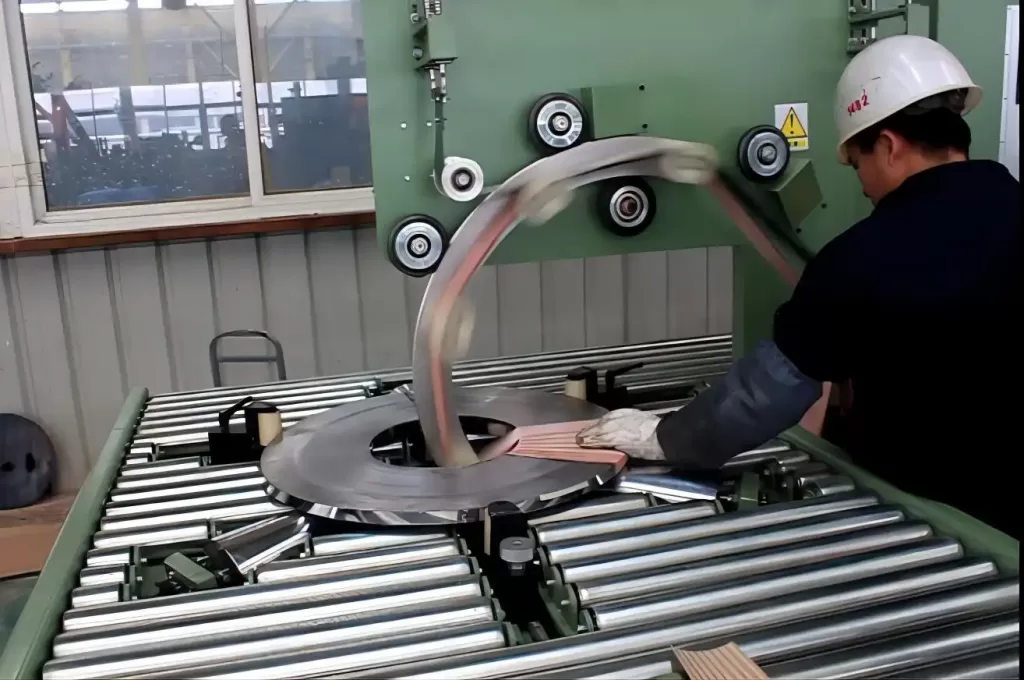
2.3 Industries Utilizing Vertical Wrappers
Vertical coil wrapping machines are commonly found in industries dealing with:
- Wire and Cable: Wrapping smaller coils or spools of electrical wire, communication cable, or fiber optics.
- Hose and Tubing: Packaging coils of flexible hose or tubing where primarily side protection and unitization are needed.
- Non-Ferrous Metals: Wrapping coils of copper, brass, or aluminum wire and strip that are stable in a vertical position.
- Textiles and Rope: Securing coils of rope, strapping, or other flexible materials.
Their suitability often depends on the coil's stability and the level of protection required. They excel where efficient, high-speed circumferential wrapping is the main goal.
3. Automatic Coil Wrapping Machines: Enhancing Efficiency
3.1 The Power of Automation in Coil Packaging
Automatic coil wrapping machines represent a significant leap in packaging efficiency and consistency. These systems operate with minimal human intervention, handling the entire process from coil loading (often via conveyor or robotic integration), wrapping according to pre-set parameters, film cutting and sealing, to unloading. Equipped with Programmable Logic Controllers (PLCs), sensors, and Human-Machine Interfaces (HMIs), automatic wrappers can dynamically adjust settings based on coil dimensions, weight, or specific recipe requirements.
This level of automation drastically reduces manual labor needs, freeing up operators for more complex tasks. It minimizes human error, leading to more consistent wrap quality and reducing the potential for workplace injuries associated with manual handling.
3.2 Ensuring Consistency and Quality Control
One of the primary benefits of automated coil wrapping is unparalleled consistency. The machine applies the wrapping material with precise tension, overlap, and number of layers every time, eliminating the variability inherent in manual or semi-automatic processes. This ensures:
- Optimal Material Usage: Minimizes film or paper waste by applying exactly the amount needed.
- Reliable Load Containment: Ensures coils are securely wrapped, reducing the risk of damage from shifting during transit.
- Uniform Package Appearance: Creates a professional and consistent look for finished products.
Advanced features like automatic film tension control and layer monitoring act as built-in quality control checks, guaranteeing high standards without requiring dedicated manual inspection resources.
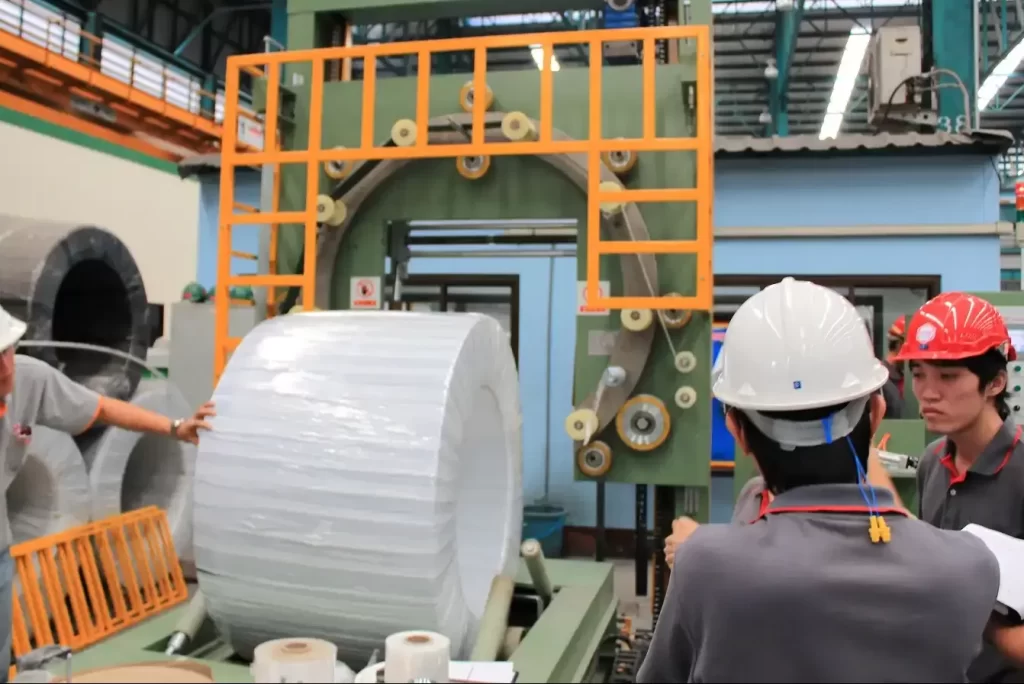
3.3 Speed, Scalability, and ROI
For high-volume operations, automatic coil wrappers are often essential. They significantly increase packaging throughput compared to manual or semi-automatic methods. This speed allows companies to meet demanding production schedules and handle large orders efficiently. Furthermore, automation provides scalability; as production volumes increase, the wrapping system can typically keep pace without requiring proportional increases in labor.
While the initial investment for an automatic system is higher, the return on investment (ROI) is often realized through:
- Reduced labor costs
- Lower material consumption due to optimized wrapping
- Decreased product damage rates
- Increased throughput and operational efficiency
4. Custom Coil Wrapping Solutions for Specialized Needs
4.1 Tailored Wrapping Techniques
Beyond standard horizontal, vertical, and automatic models, many manufacturers offer customization to address unique coil characteristics or specific packaging requirements. This can involve tailoring the wrapping process itself:
- Variable Tension Control: Applying different levels of film tension at various points in the wrap cycle (e.g., tighter wrap at the base).
- Selective Wrapping: Programming the machine to wrap only specific parts of a coil or product bundle.
- Multi-Material Application: Systems capable of applying layers of different materials, such as an inner layer of VCI paper followed by an outer layer of stretch film. For more on protective packaging materials, see resources from organizations like the International Safe Transit Association (ISTA).
- Profile Wrapping: Specialized machines designed to wrap non-standard coil shapes or long products effectively.
These tailored techniques ensure optimal protection while potentially minimizing material usage and cycle time for non-standard applications.
4.2 Industry-Specific Configurations
Customization often extends to machine configuration to meet the demands of specific industries or integrate seamlessly into existing production lines. Examples include:
- Integrated Weighing Systems: Adding scales to weigh coils before or after wrapping.
- Automatic Labeling/Printing: Applying labels or printing directly onto the wrap for identification and tracking.
- Specialized Conveying Systems: Custom conveyors for handling particularly heavy, fragile, or unusually shaped coils.
- Environmental Adaptations: Modifications for operation in harsh environments (e.g., extreme temperatures, washdown areas).
- Integrated Strapping/Banding: Combining wrapping and strapping functions into a single automated cell.
These configurations enhance the machine's utility, streamline the overall packaging workflow, and ensure compliance with industry-specific standards.
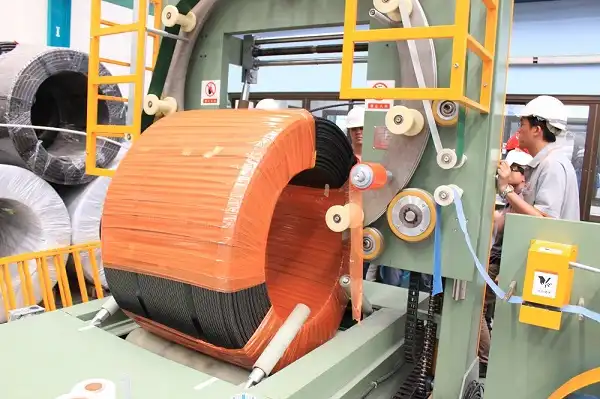
4.3 Modularity and Future-Proofing
Many modern coil wrapping machines are designed with modularity in mind. This allows businesses to invest in a base system and add features or upgrade components as their needs evolve. For example, a semi-automatic machine might be upgradeable to full automation later, or additional safety features or handling options could be incorporated.
This flexibility protects the initial investment and allows the packaging solution to adapt to changing product lines, increased production volumes, or new regulatory requirements. Choosing a modular system provides a degree of future-proofing, ensuring the machine remains a valuable asset for years to come.
Conclusion: Choosing the Right Coil Wrapping Machine
The diverse range of coil wrapping machines—horizontal, vertical, automatic, and custom solutions—offers tailored options for nearly every industrial packaging need. Each type presents distinct advantages concerning coil orientation, size, weight handling, protection level, speed, automation, and footprint. Understanding these differences is the first step toward selecting a machine that aligns perfectly with your specific operational requirements and strategic goals.
Making the optimal choice involves carefully evaluating factors such as coil characteristics (dimensions, weight, material), required throughput, level of protection needed, available floor space, labor resources, budget, and future growth projections. By considering the benefits and potential drawbacks of each machine type and exploring available customization options, businesses can invest in a coil wrapping solution that enhances product protection, optimizes material usage, boosts efficiency, and supports long-term operational success.
[claim] Selecting the appropriate coil wrapping machine based on a thorough analysis of operational needs, coil specifications, and desired automation level ensures packaging processes remain cost-effective, efficient, and capable of meeting current and future demands. This strategic investment is fundamental to protecting product value and maintaining a competitive edge.
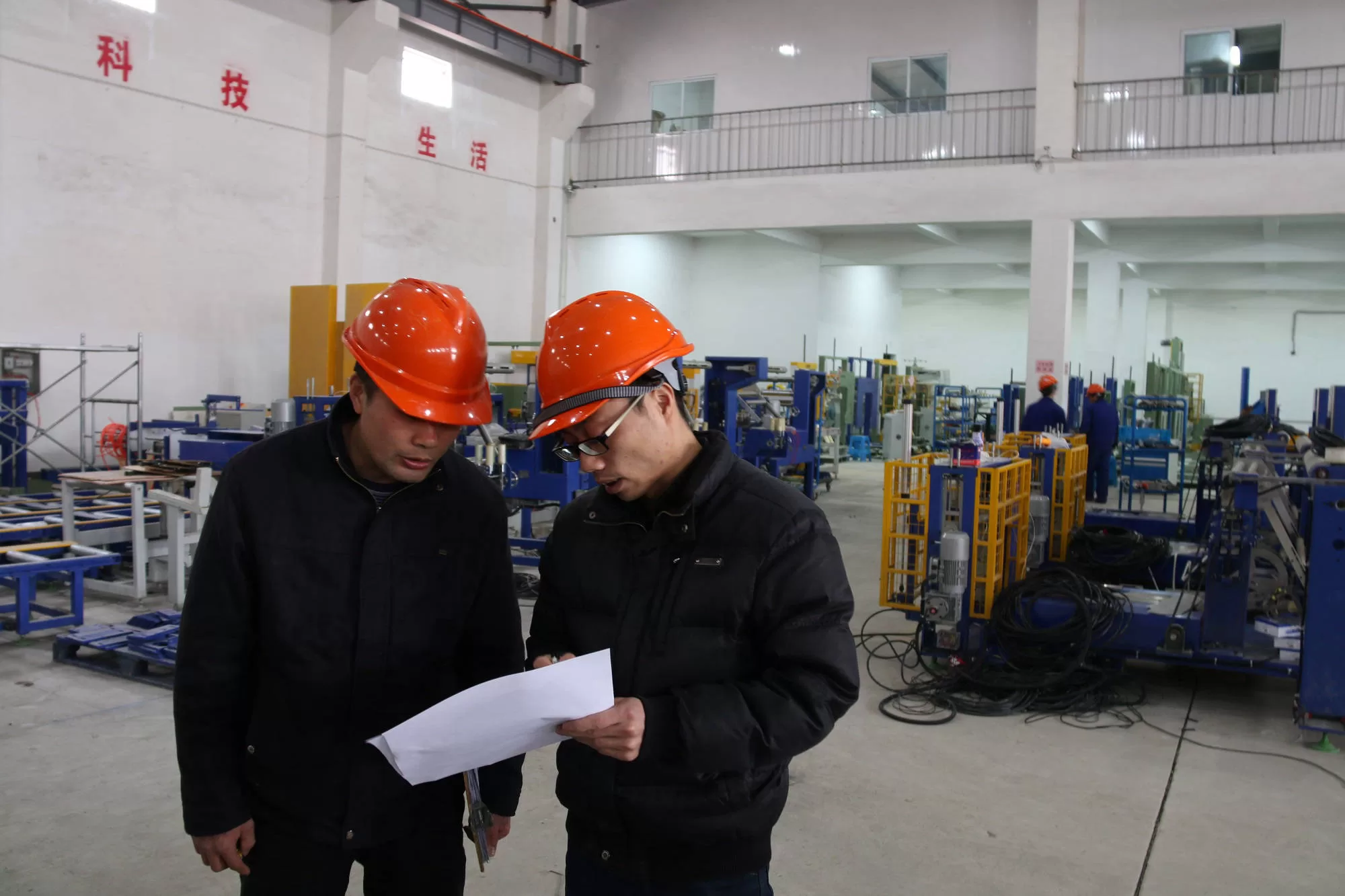
Get Your Best Solution !